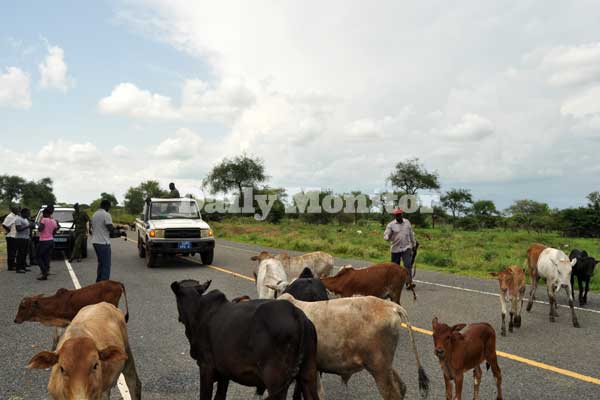Prime
The Balaalo question and land crisis in Acholi

Author: Robert Mugabe. PHOTO/FILE
What you need to know:
- The cash economy was alien to Acholi culture. Wealth and prestige were seen in the number of food granaries and herds of animals in a homestead.
The media in Acholi sub-region is currently awash with news stories of the Balaalo invading the sub-region with large herds of cattle. The Balaalo are nomadic pastoralists who move from one place to another in search of greener pastures.
They started coming to Acholi in relatively small numbers about five years ago, but currently, they are coming in droves, with large herds of cattle.
Here is why Acholi sub-region was home to a debilitating civil war between Government of Uganda and Lord’s Resistance Army that lasted for more than two decades. For most of the two decades, the Acholi were forced into concentration camps, euphemistically called, Internally Displaced People’s Camps (IDPCs). Living in the concentration camps has had devastating repercussions on the socio-economic and political way of life of the Acholi.
How so? Time immemorial, Acholi eke a living from mixed farming i.e. crop production and rearing of domestic animals. Before the war, nearly every homestead in Acholi planted crops and reared animals for commercial and subsistence purposes.
Crops such as cotton, tobacco, sesame, groundnuts, millet, peas, and, domestic animals such as cattle, goats, sheep, were reared.
The cash economy was alien to Acholi culture. Wealth and prestige were seen in the number of food granaries and herds of animals in a homestead. Therefore, the Acholi were a strong, wealthy and proud people who did not look to government for their wellbeing and enrichment.
However, when they were forced into encampment, their livelihood was cut-off and wealth robbed by government and rebel forces. In addition, the social and cultural fibre that made Acholi productive, responsible and respectable members of the society were obliterated.
Consequently, the Acholi were impoverished and lived lives characterised by destitution and misery. That is why all human development indices put Acholi people at the tail end. The latest UBOS Household Survey that put poverty in Acholi at 68 per cent only being one of them.
But not all was lost.
The people of Acholi, in spite of the ploy to impoverish them, remained with one of the most important factors of production, namely, land.
If used productively, this land might empower Acholi people socially and economically. This may make them wealthy and powerful again.
Not many people would want this to happen.
Therefore, there are all sorts of malicious schemes to dispossess them of the land. To achieve this, many approaches are being employed, including using force of arms, deception, money, etc. That explains what has and continues to happen in Amuru, Atiak, Nwoya, Apaa, Orom, Palabek, and so on.
Presently, the Balaalo approach is in vogue. These are purveyors of interests of the strong and wealthy. They mainly use money and force of arms.
The Apaa debacle is classical example, where money has been used to lure the poverty stricken people to ‘sell’ their land at giveaway prices and force of arms to intimidate Apaa residents to give up their land rights.
That is why the people of Acholi will cry their voices hoarse about the Balaalo but there will be no serious government intervention.
Certainly, subjecting land of the impoverished people of Acholi to the forces of demand and supply was intended to achieve the stated objective. But the schemers forgot that land in Acholi is governed by their customs which mainly guarantee communal ownership and usage, rather than individualised ownership and usage.
In Acholi customs, an individual may own a homestead, garden, farm, ranch, etc. But grazing land, hunting ground, forests, water bodies, mountains or hills are never individually owned. So, at the right time, all these lands will be reclaimed. I bet you.
The writer is a politician, trainer and writer




